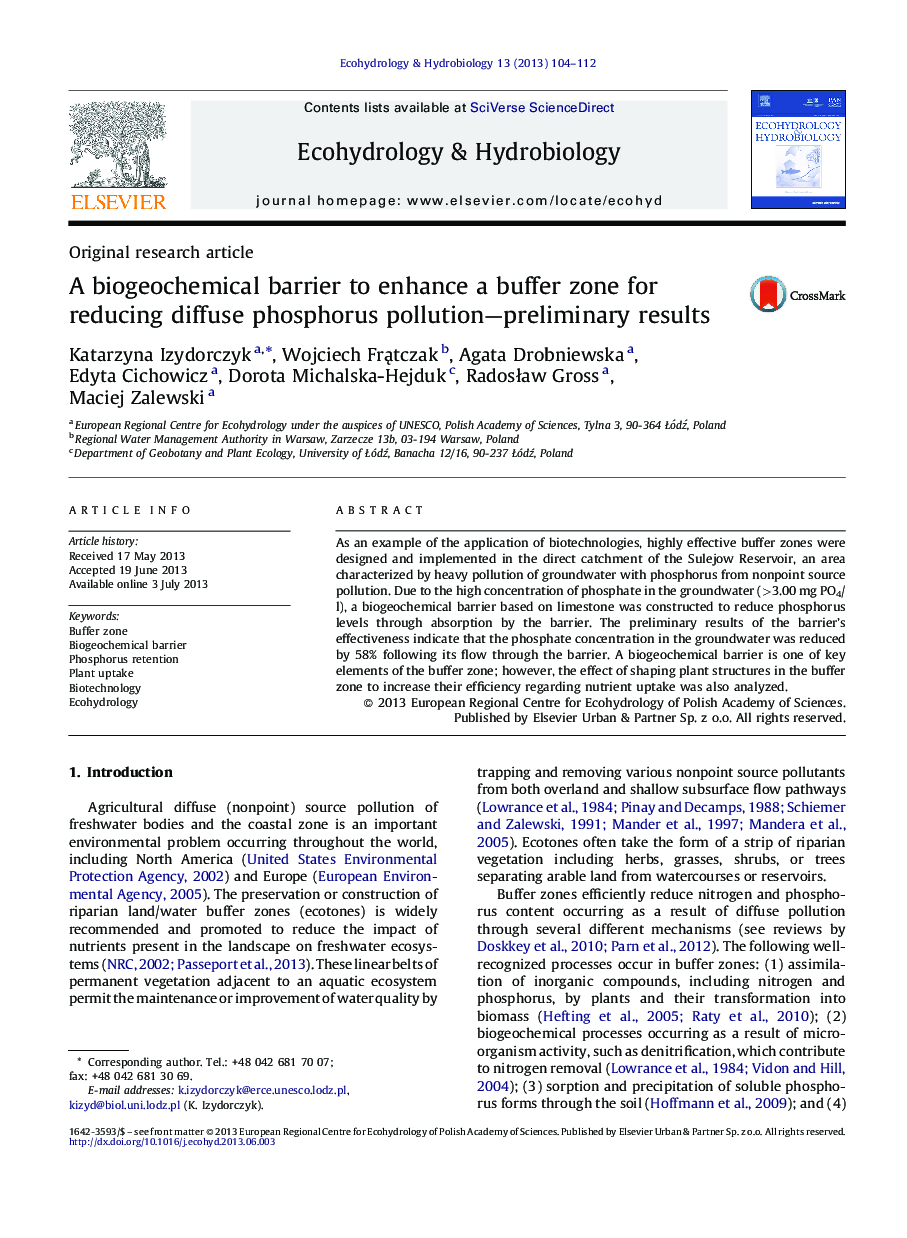| Article ID | Journal | Published Year | Pages | File Type |
|---|---|---|---|---|
| 4388057 | Ecohydrology & Hydrobiology | 2013 | 9 Pages |
As an example of the application of biotechnologies, highly effective buffer zones were designed and implemented in the direct catchment of the Sulejow Reservoir, an area characterized by heavy pollution of groundwater with phosphorus from nonpoint source pollution. Due to the high concentration of phosphate in the groundwater (>3.00 mg PO4/l), a biogeochemical barrier based on limestone was constructed to reduce phosphorus levels through absorption by the barrier. The preliminary results of the barrier's effectiveness indicate that the phosphate concentration in the groundwater was reduced by 58% following its flow through the barrier. A biogeochemical barrier is one of key elements of the buffer zone; however, the effect of shaping plant structures in the buffer zone to increase their efficiency regarding nutrient uptake was also analyzed.
